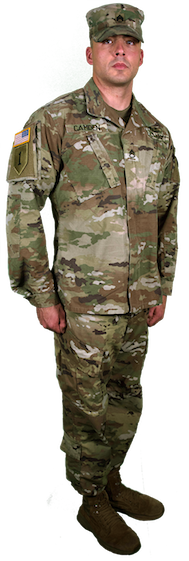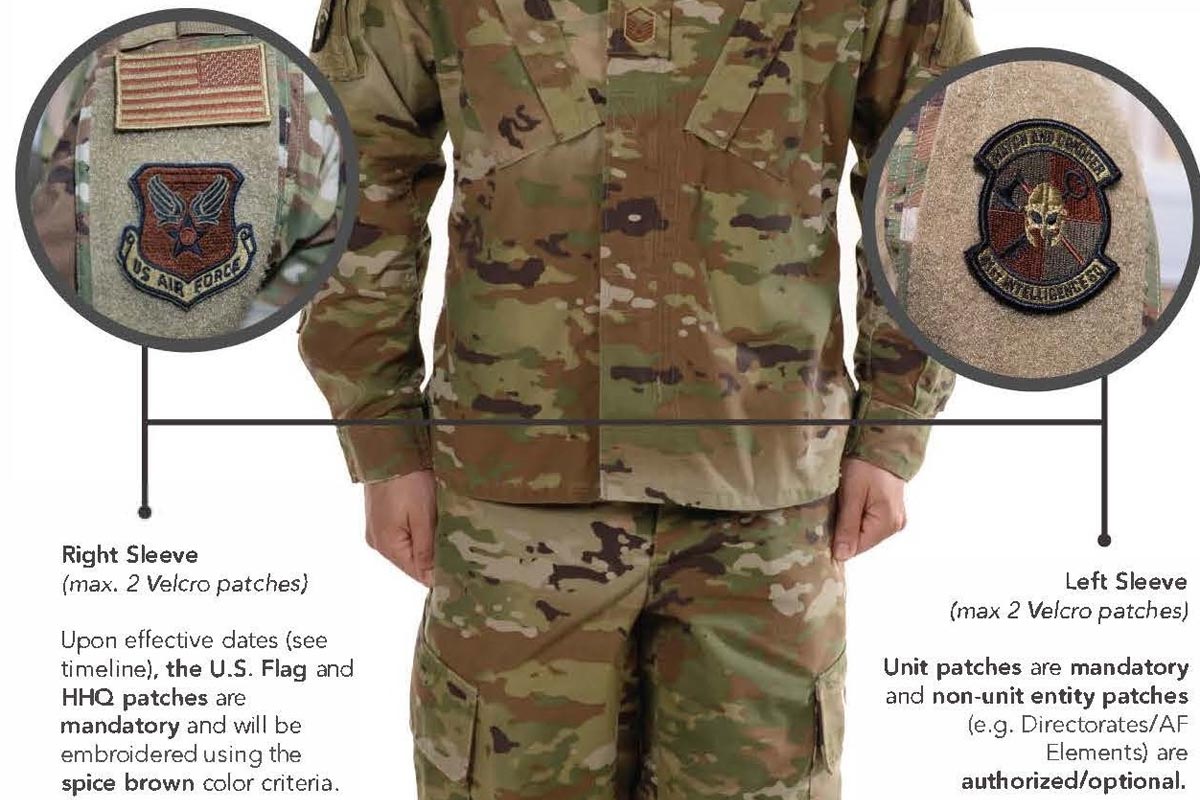Army Regulation On Gambling In Uniform

The order of precedence is outlined in Army Regulation 670-1, 'The Wear and Appearance of Army Uniforms and Insignia.' Special Skill Badges Special skill badges, such as Airborne or Air Assault, must be centered and placed 1/4-inch above the female soldier's ribbon rack.
The only regulation I can find pertaining to this particular situation is Army Regulation 670-1 1-14 A: 'Soldiers may wear a wristwatch, a wrist identification bracelet, and a total of two rings (a wedding set is considered one ring) with Army uniforms, unless prohibited by the commander for safety or health reasons. The Chief of Staff of the Army, or former Chiefs of Staff of the Army, each of whom may prescribe his or her own uniform. Por-tions of this regulation are punitive. Viola-tion of the specific prohibitions and require-ments of specific portions by Soldiers may result in adverse administrative and/or charges under the Uniform Code of Mili-tary. Some gambling activities, however, are allowed but only if specifically approved by Headquarters, Department of the Army. Before participating in any gambling activity on Army property or while on. These free and easy to donwload PDFs have tips and how-to's to keep your uniform updated to Regulation Standards. As uniform standards change, our guides change. So always check back for the newest guides! Quick Ribbon notes for Army Blue Uniforms: Male personnel wear the ribbons centered 1/8 inch above the left pocket.
a. Personnel who will be advanced to a higher grade upon retirement have the option of wearing the insignia of that grade thereafter.
b. Retired personnel on active duty will wear their uniform and insignia in the same manner as prescribed for personnel in the Active Army of corresponding grade and branch.
c. Retired personnel not on active duty may wear either the uniform reflecting their grade and branch on the date of their retirement, or the uniform for personnel in the Active Army of corresponding grade and branch, when appropriate, but may not intermix the two uniforms. Personnel will wear the grade as shown on the retired grade of rank line on the retirement order.
d. Retired personnel not on active duty are not authorized to wear shoulder sleeve insignia, except as follows:
(1) Personnel performing instructor duties at an educational institution conducting courses of instruction approved by the Armed Forces will wear the shoulder sleeve insignia of the command that is responsible for the course of instruction. Senior and junior ROTC instructors will wear the Cadet Command shoulder sleeve insignia on their left shoulder (see AR 145-1 and 145-2 for wear of the uniform by senior and junior ROTC instructors, respectively).
(2) Retired personnel are authorized to wear the shoulder sleeve insignia for U.S. Army Retirees on the left shoulder. The insignia consists of a white cloth disc with a blue border, and an inner white disc with a red border, which bears a blue and white adaptation of the coat of arms of the United States. The outer disk that surrounds the coat of arms contains the inscription “UNITED STATES ARMY” in red letters at the top, and the word “RETIRED” in blue letters at the bottom (see fig 30.1).
(3) Retired personnel may wear the shoulder sleeve insignia for former wartime service (SSI-FWTS) on the right shoulder if they were authorized wear of the SSI-FWTS while on active duty.
e. Retired personnel not on active duty are not authorized to wear the Army uniform when they are instructors or responsible for military discipline at an educational institution, unless the educational institution is conducting courses of instruction approved by the Armed Forces.
f. In addition to the occasions for wear listed above, retired personnel are authorized to wear the uniform only on the following occasions. Uniforms for these occasions are restricted to service and dress uniforms; the BDU and physical fitness uniforms will not be worn.
(1) While attending military funerals, memorial services, weddings, inaugurals, and other occasions of ceremony.
(2) Attending parades on national or state holidays, or other patriotic parades or ceremonies in which any active or reserve United States military unit is taking part. Wear of the Army uniform at any other time, or for any other purpose than stated above is prohibited.
g. Retirees are authorized to wear the physical fitness uniform (PFU) or the improved physical fitness uniform (IPFU) under the following provisions:
(1) May wear the PFU or the IPFU with civilian attire off the installation.
(2) When wearing the PFU or the IPFU as a complete uniform, retirees will:
(a) Wear only authorized accessories corresponding to those worn by personnel of the Active Army.
(b) Keep the sleeves down on the sweatshirt or jacket, the legs down on the pants, and the t-shirt tucked inside the
trunks.

(c) Not roll or push up the sleeves of the IPFU sweatshirt or the PFU/IPFU jacket.
(d) Wear the sleeves of the IPFU sweatshirt cuffed or uncuffed; may not cuff the IPFU jacket sleeves.
(e) Wear the black knit cap pulled down snugly on the head, with the bottom edge of the cap folded up; will not roll
the edge of the cap. A similar, commercially designed black knit cap is authorized for wear. h. Pregnant retirees are authorized to wear the t-shirt/sweatshirt outside the trunks/sweatpants.
For further reading on the AR670-1 army compliant guide, check out the website buttons above.
Be sure to read all about our top 10 lists, such as the top 10 AR670-1 compliant sunglasses or the top 10 AR670-1 compliant army boots. For all of our offered review articles, click here.

a. All personnel will wear the Army uniform when on duty, unless granted an exception by the commander to wear civilian clothes. The wear of civilian clothing on duty is subject to the provisions of AR 700-84. The following personnel may grant exceptions:
(1) Commanders of major commands.
(2) Assistant Secretaries, the Secretary of Defense or his designee, or the Secretary of the Army.
(3) Heads of Department of Defense agencies.
(4) Heads of Department of the Army Staff agencies.
b. Personnel traveling on Air Mobility Command (AMC) and non-AMC flights on permanent change of station (PCS) orders, temporary duty (TDY), emergency leave, or space-available flights, are authorized to wear civilian clothes. Personnel must ensure clothing worn is appropriate for the occasion and reflects positively on the Army. (See Department of Defense Foreign Clearance Guide (DOD 4500.54-G)) for information concerning mandatory wear of civilian clothing in foreign countries. The individual’s travel orders will reflect information authorizing the wear of civilian clothing.)
c. Soldiers may wear the BDU when deploying as part of a unit move and the mode of transportation is for the exclusive use of the military. Embarkation and debarkation points will be in military-controlled areas.
d. Soldiers may wear optional uniform items with the class A and B service uniforms, as prescribed in this regulation. All uniform combinations are authorized for year-round wear. However, soldiers should use appropriate discretion based upon weather conditions and duties. Wearing combinations of uniform items not prescribed in this regulation or in other authorization documents approved by HQDA, is prohibited. Commanders will not prescribe seasonal wear dates for uniform items.
e. Wear of military and civilian items.
(1) The wear of a combination of civilian and military clothing is prohibited, unless prescribed in this regulation or other authorization documents approved by HQDA.
(2) Soldiers may carry civilian gym bags, civilian rucksacks, or other similar civilian bags while in uniform. Soldiers may carry these bags by hand, on one shoulder using a shoulder strap, or over both shoulders using both shoulder straps. If the soldier opts to carry a bag over one shoulder, the bag must be carried on the same side of the body as the shoulder strap; therefore, soldiers may not carry the bag slung across the body with the strap over the opposite shoulder. If soldiers choose to carry a shoulder bag while in uniform, the bag must be black with no other colors and may not have any logos. The contents of the bag may not be visible; therefore, see-through plastic or mesh bags are not authorized. There is no restriction on the color of civilian bags carried in the hand. These rules do not apply to purses, which are covered in chapter 27 of this regulation. Commanders govern the wear of organizational issue rucksacks in garrison and field environments.
f. Soldiers may continue to wear uniform items changed in design or material as long as the item remains in serviceable condition, unless specifically prohibited. (See appendix D for a list of possession and wear-out dates for uniform items.)

g. Civilian clothing is considered appropriate attire for individuals who are participating in civilian outdoor activities such as volksmarches, orienteering, or similar activities. Soldiers who are spectators at these activities may wear the service uniform. Soldiers who are participating in, or observing these events are not authorized to wear utility or field uniforms. However, commanders of participating units or of those units that provide support personnel, such as medical and traffic control personnel, may prescribe appropriate uniforms, to include utility or organizational uniforms, if warranted by the occasion, weather conditions, or activity.
h. Soldiers may wear experimental uniform items while actively engaged in an experimental uniform test program approved by HQ, U.S. Army Training and Doctrine Command (TRADOC), HQ, U.S. Army Materiel Command (AMC), or the Army Uniform Board, HQDA. Soldiers will not wear experimental items after completion of the test unless such wear is approved by HQDA.
i. Army National Guard technicians who are also members of the Army National Guard will wear the appropriate Army duty uniform while engaged in their civil service status.
j. Wearing Army uniforms is prohibited in the following situations:
(1) In connection with the furtherance of any political or commercial interests, or when engaged in off-duty civilian employment.
(2) When participating in public speeches, interviews, picket lines, marches, rallies, or public demonstrations, except as authorized by competent authority.
(3) When attending any meeting or event that is a function of, or is sponsored by, an extremist organization.
(4) When wearing the uniform would bring discredit upon the Army.

(5) When specifically prohibited by Army regulations.
k. Soldiers will wear headgear with the Army uniform, except under the following circumstances:
(1) Headgear is not required if it would interfere with the safe operation of military vehicles. The wear of military headgear is not required while in or on a privately owned vehicle (to include a motorcycle, bicycle, or convertible automobile), a commercial vehicle, or on public conveyance (such as a subway, train, plane, or bus).
(2) Soldiers will not wear headgear indoors unless under arms in an official capacity, or when directed by the commander, such as for indoor ceremonial activities.
(3) Male and female soldiers are not required to wear headgear to evening social events (after Retreat) when wearing the Army blue and white uniforms, the enlisted green dress uniform, the Army green maternity dress uniform (females only), or the mess and evening mess uniforms.
(4) Soldiers will carry their headgear, when it is not worn, in their hands while wearing service, dress, and mess uniforms. Soldiers are authorized storage of the headgear, when it is not worn, in the BDU cargo pockets. Soldiers must fold the headgear neatly so as not to present a bulky appearance. Soldiers will not attach headgear to the uniform or hang it from the belt.